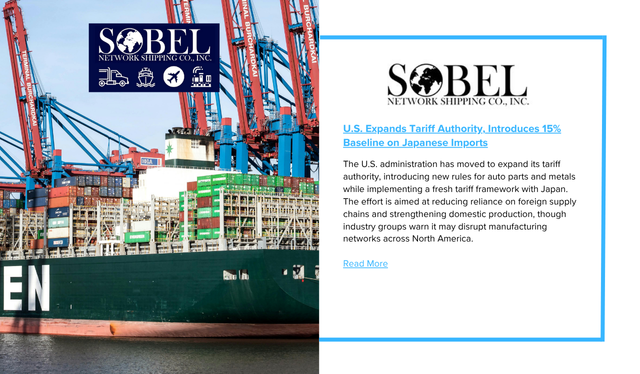The U.S. administration has moved to expand its tariff authority, introducing new rules for auto parts and metals while implementing a fresh tariff framework with Japan. The effort is aimed at reducing reliance on foreign supply chains and strengthening domestic production, though industry groups warn it may disrupt manufacturing networks across North America.
On Sept. 17, the Department of Commerce issued an interim final rule creating an inclusion process for auto parts under Section 232, the statute that allows tariffs on imports deemed a national security risk. The rule permits U.S. producers to petition for additional components to face the current 25% duty. The first request window is open through Oct. 14, with public comment periods to follow. Similar inclusion requests for downstream steel and aluminum products are also being accepted through Sept. 29.
According to the White House, these steps “protect national security, strengthen supply chains, and support American workers and industries.” Officials argue the measures will help reduce dependence on imports and bolster domestic manufacturing.
Industry representatives, however, raised concerns. In a Sept. 16 letter, more than 40 business associations said the expanded inclusion process could heighten compliance burdens, raise costs, and damage downstream industries. They noted that many imports now covered are not available in sufficient quantities domestically, creating risks for supply continuity and employment across sectors tied to steel, aluminum, and automotive components.
Separately, a Sept. 5 executive order revised the administration’s reciprocal tariff policy first imposed in April, broadening the list of products under coverage. Items such as aluminum hydroxide, resin, and silicone were added, while a new “Potential Tariff Adjustments for Aligned Partners” Annex was introduced. This mechanism allows for reduced tariffs on certain goods — ranging from aircraft parts to agricultural exports — if partner nations reach agreements that address U.S. demands on reciprocity and security.
The administration also finalized a trade deal with Japan, creating a 15% baseline tariff on most Japanese imports. Sector-specific terms apply to autos, aerospace, and pharmaceuticals, with implementation phased in during August and September.
Tariffs now apply to imports from over 90 countries, with rates ranging from 15% on Japan and South Korea to 50% on Brazil and India. Key U.S. trading partners currently face the following tariff levels:
-
Brazil: 50%
-
India: 50%
-
Laos: 40%
-
Switzerland: 39%
-
Canada: 35%
-
China: 30%
-
South Africa: 30%
-
Mexico: 25%
-
Japan: 15%
-
South Korea: 15%
The changes mark another escalation in tariff policy, with both potential opportunities for domestic manufacturers and added challenges for global supply chains.


